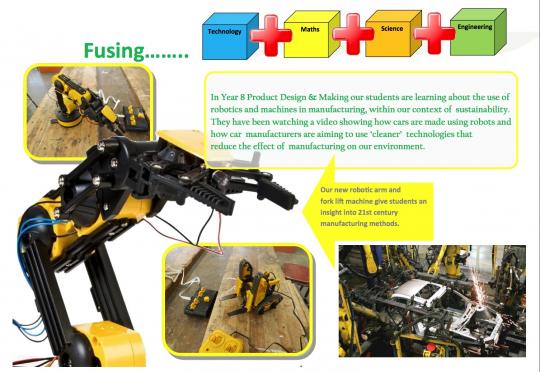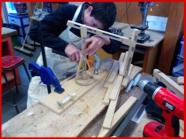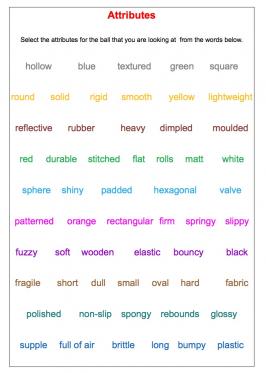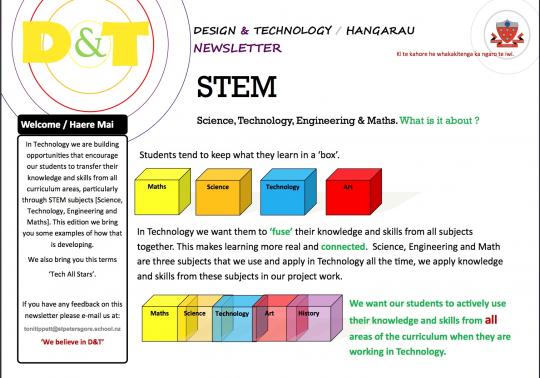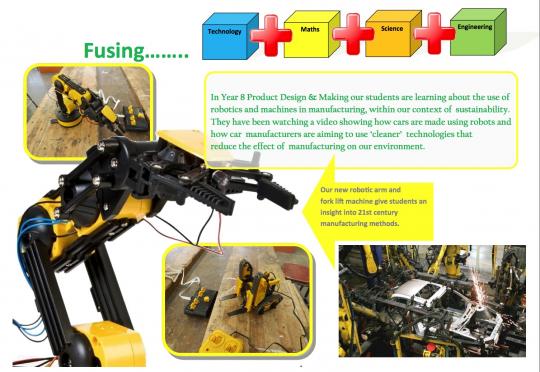St Peter's College: Strategies for improvement in years 7–13
At St Peter's College in Gore, Toni Tippet (HELA Technology) has been working with the technology teachers to develop strategies to help their students improve.
This follows on from the earlier initiatives described in Raising achievement in years 7–10 technology.
This case study provides some examples of assessment for learning.
Literacy in technology
One of the areas teachers have focused on is improving literacy skills (reading, writing, listening, and speaking) in technology.
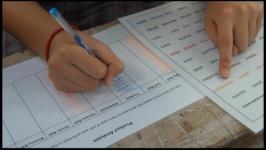
Teachers examined a range of student evidence and identified vocabulary as one of their problem areas. For example, in product analysis it was obvious that students lacked the words to describe the functional and physical attributes of products. Similarly, many students were unable to describe accurately the components of products and how they were put together to create a product.
Toni Tippet also mapped out all the types of writing students do in technology to help identify the range of literacy skills they would need to focus on.
Supporting strategies
The teachers have trialled using word mats and writing frames to support students’ literacy. They are also making more time for one-on–one discussions with students.
Word mats
In alphabetical order on a laminated A3 sheet, teachers record key words for describing a product.
When analysing different types of balls, for example, year 7 students can touch them, weigh them, and bounce them. They then use the word mat below to help them identify and describe the attributes for each ball.
Ball attributes word mat (PDF, 101 KB)
Different mats were developed for different purposes. To encourage students to explain the rationale behind product development, teachers also provided grids with guiding questions. Students are encouraged to use these to annotate or evaluate their ideas and the thinking behind their decisions.
Materials, smell, and taste word mats (PDF, 25 KB)
Grid to annotate design ideas (PDF, 69 KB)
Grid to evaluate design ideas (PDF, 85 KB)
Writing frames
Writing frames were also developed. These are used in junior and senior levels to support students in learning how to write reports. This helps them successfully provide evidence for NCEA achievement standards. The use of writing frames at senior level is showing good results in results for external achievement standards.
Discussions with individual students
Students have generally been better able to describe products through discussion than through writing.
Teachers are trying to create more opportunities to listen and have discussions with individual students to support their oral language development and to grow their understandings. This can be a challenge with larger classes. Students are also being encouraged to ask more questions to support a deeper engagement in their learning. The teachers are considering the possibility of recording these conversations as forms of evidence for assessment.
Differentiation
Teachers were aware of the need for differentiation within technology programmes and they felt that they were not addressing this effectively.
Students were beginning the programme with very mixed levels of practical skills and some with little understanding of the technology learning area.
The following strategy to strategy to develop a “fully inclusive” local school curriculum is being trialled with year 7 and 8 students.
Supporting strategy
Student challenges
Students choose a low, medium, or high challenge project. Each challenge has the same context, but the levels of challenge differ as follows:
- The easy challenge requires students to build a product following step-by-step instructions. In this challenge, all of the “basics” that teachers want students to learn are included.
- The medium challenge requires students to take the easy challenge and adapt it for their own need. In this challenge, students have more autonomy to experiment and less guidance.
- The high challenge requires students to identify their own need and opportunity. In this challenge, students have to fully solve their own problem.
The teachers’ initial concerns with this approach included:
- What if they fail?
- What if they all choose too high a challenge?
- What if they all take the easy option?
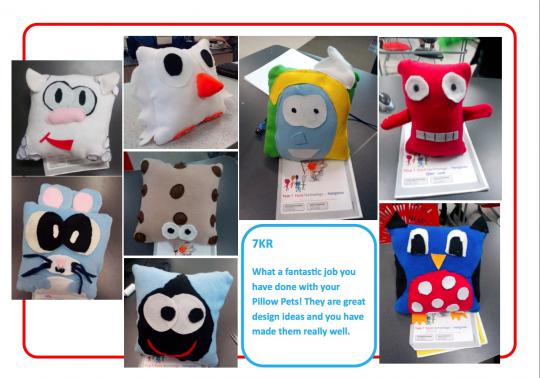
However, the students have selected wisely. The teachers found 50% chose the medium challenge category and 25% chose each of the other categories.
Projects are divided into stages. The stages are recorded on the board. The students note their name under the stage they are at, changing it as they progress to the next. Teachers are able to see at a glance where all of the students are and how the class is progressing. This helps students to monitor their own progress more too.
Growing resilience and celebrating success
Teachers have found that it is important to have discussions with students about resilience and learning through failure and to celebrate success.
The teachers had noted that many students found it difficult to persist through perceived failure. Senior students sometimes gave up on their projects altogether, with catastrophic results for NCEA achievement.
Supporting strategies
Teachers have increased their focus on supporting students to see the learning they are achieving, or can achieve, through failure.
In product development, it is inevitable that outcomes will not always be as imagined the first time round and will require refinement through functional modelling. Students are being encouraged to see that this is an authentic part of technological practice and that perseverance helps to develop a resilient learner.
Tech all stars
A reward system has been established to celebrate student success. The criteria are based on resilience in learning and a consistent work ethic. Students selected receive a small certificate and their success is noted in the Technology Newsletter that goes home to all parents.
St Peter's Gore Design and Technology Newsletter, Term 2 (PDF, 6 MB)
Encouraging student creativity
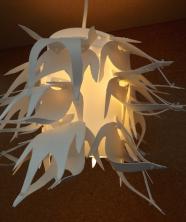
Toni Tippet had been thinking about creativity because ideation is now a key focus in the level 3 design and visual communication programme.
Supporting strategy
Is creativity teachable?
Toni wondered if students in a year 8 visual design and communication rotation were able to model in more ways than just drawing, would this stimulate creativity?
The students were asked to design a flat-pack lampshade. They watched YouTube clips showing examples of flat-pack lamps. Teachers then had the students model their designs by drawing and then making their model using paper and blue tack.
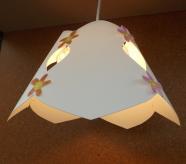
The answer was a resounding “yes”. Modelling in more ways had stimulated creativity and students had produced more divergent ideas. The modelling enabled them to generate and communicate ideas they may not otherwise have been able to imagine or draw.
The students were enjoying the project and completely engaged so they were then given the opportunity to make full size lampshades using polypropylene and clips. Teachers thought about how they could use this approach in other specialist areas.
Technology and STEM
Teachers wanted to test whether the STEM approach to education could be applied through a technology unit.
Supporting strategy
The year 8 students were set an engineering challenge – to move marbles from one container to another. Students were taught about pneumatics, hydraulics, and mechanisms and analysed a small robot with a mechanical arm. Discussions on the use of robotics in the car industry linked to the technology faculty overall theme of sustainability. The students learned scientific knowledge around forces and motion. They had to develop a mechanical arm through technological practice and use mathematics to work out the correct sizes for parts.
It was apparent to the teachers that as technology teachers they did have the capacity to deliver STEM education. They could see that technology as a learning area provides access to many knowledge bases.
Teacher inquiry and student voice
Teaching as inquiry
Following the teaching as inquiry model, the technology faculty teachers have analysed their data, looked at their strengths, and decided to focus on developing literacy and encouraging creativity. One of their actions is putting together toolkits of some of the strategies trialled and sharing these with each other.
Student feedback
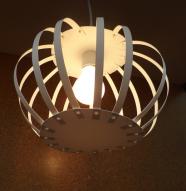

Students completed evaluations at the end of each project. Feedback from students on some of the new strategies includes:
Literacy support materials
- The use of different colours helps me to read it
- The word mat helped me lots
Challenges
- I like being able to choose a challenge level that I feel comfortable with
- It’s more exciting when I can use my own ideas
- I chose the high level so I could do my own idea
Making models
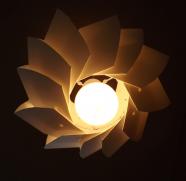

- It’s fun making models
- Making the models has helped me think of ideas
- I was able to make ideas with paper that I could not draw
- It’s easier to draw it if you can see it
- I want to do more modelling
- It’s creative
- Can we model with other things too?
